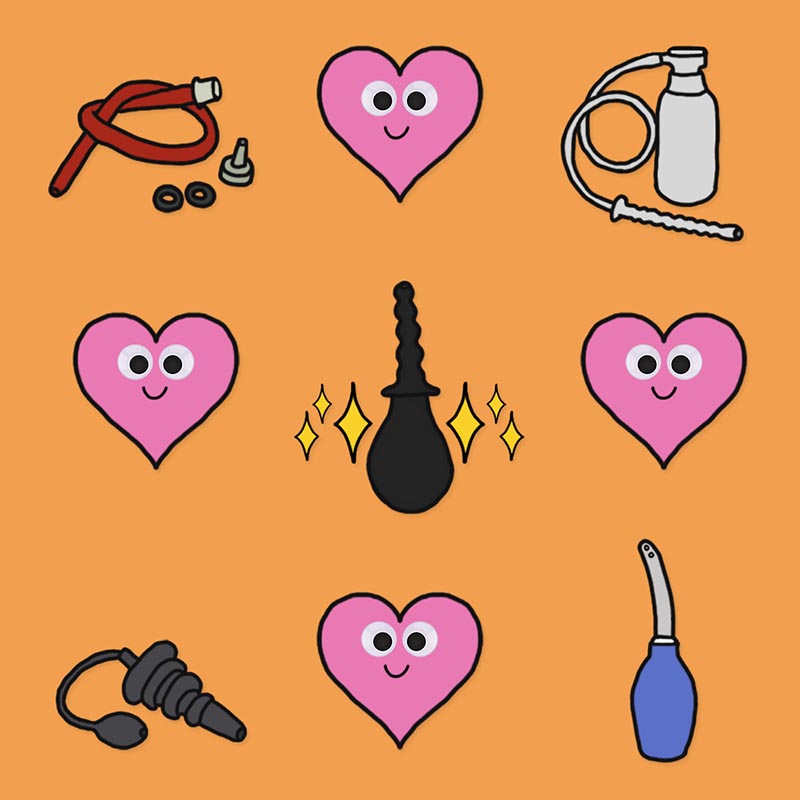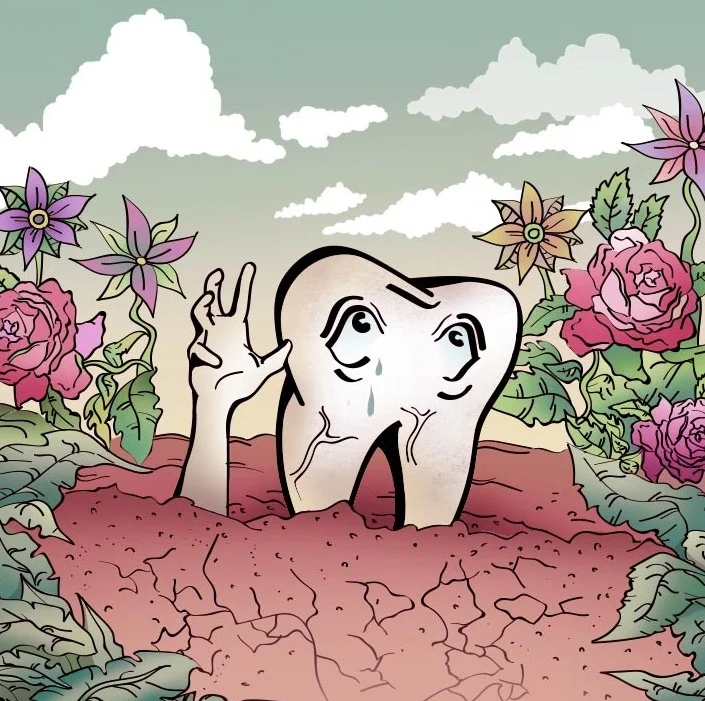How to Treat & Defeat Butt Acne
Having junk on your trunk is nothing to be embarrassed about. A lot of people have it, you just can’t see it because clothes.
By Jessie Schiewe
Flaunt it if you’ve got it — or just get rid of your butt acne altogether. (Art: Nes Vuckovic)
We live in an ass-obsessed culture.
From Sir Mix-A-Lot’s “Baby Got Back” to the entire Kardashian clan to every hot girl on Instagram, this is a time where bigger is always better, especially when that applies to one’s derriere.
You know this, I know this, even your grandmother knows this, but perhaps no one feels the sting of our ass-centric society more than someone who feels they can’t show off their own...because they have butt acne.
It’s an easy thing to hide for the most part, but butt acne — also known as “buttne” — can also be physically painful and mentally taxing for those who have it.
And, even when people are in situations where they can talk freely about having zits on their buns, they generally don’t, said Miriam Ferreira, a dermatologist at All Skin Dermatology in Berkeley, California.
Only “very few” of her patients bring up butt acne as the primary reason for their appointment, with most people mentioning it only after they’ve come in to treat something else entirely.
“People feel too embarrassed to talk about it,” Ferreira told OK Whatever. “The butt [is] a sex symbol, so I guess there is a higher expectation for clear skin on the buttocks than [there was] in previous generations.”
The problem of butt acne tends to be most common in 20- to 30-year-olds of both genders, in Ferreira’s experience, which might also be a factor in why so few people bring it up. No longer teenagers, people might feel embarrassed about having pimples down there and discussing it with a stranger, or they might be too caught up in their work or growing a family to remember to address it with a doctor at all.
The good news, aside from the fact that it’s easy to hide, is that butt acne does not have to be a forever thing. If you’re sick of dreading beach days or avoiding thong underwear, here are some pointers on how to treat that junk on your trunk and keep it in check.
Butt acne is different from facial acne
Those bumps on your behind aren’t actually zits. They’re folliculitis, “an inflammation of the opening of the hair follicle often with bacteria or sometimes fungal organisms participating,” Ferreira said.
While genetics plays somewhat of a role in whether or not you’ll develop it, the amount of friction that occurs on your bum is another catalyst will affect the growth of pimples. The activities you do and the clothing you wear are particularly key. Things like bicycling, sweating in your sleep, or sitting for too long can all cause butt acne, as can wearing sweaty or tight-fitting clothes.
Exfoliate and scrub the butt acne away
So long as you aren’t overzealous — because that will irritate the skin — exfoliating and scrubbing your behind are good options for curing butt acne. Ferreira recommended using scrubs or lotions that contain alpha-hydroxy acids, such as glycolic acid and salicylic acid, which act as peeling agents, loosening and removing the dead skin cells.
Neutrogena has a whole range of acne products containing salicylic acid, and you can also find products specifically formulated to fight butt acne — like Lab & Co.’s Butt Acne Clearing Lotion that contains alpha-hydroxy acids, along with more soothing ingredients like arnica and calendula.
Benzoylperoxide is another acne-reducing ingredient, found in products like PanOxyl, that gets results, but be aware that the stuff can stain fabrics and leave behind bleach marks, too.
Clean your butt on-the-go
Sweat and dirt are two culprits of folliculitis, which means keeping your rear clean should be one of your main goals when combating butt acne.
After wearing thick, non-breathing fabrics, sitting for hours, or doing anything strenuous that might cause you to sweat, swab your butt with facial pads to remove the grime from your pores. Choose wipes like Neutrogena’s Rapid Clear Treatment Pads or Newport Cosmeceutical’s 20% Glycolic Acid Pads that contain acne-fighting ingredients.
Consider prescription products
If your butt acne isn’t going away despite your best efforts, it might be time to see a dermatologist. Ferreira has prescribed both oral antibiotics, like doxycycline, and topical creams, like clindamycin, for patients suffering with those cursed backside bumps.
Keep in mind that it might take up to two to three months to see an improvement in the acne, and that return visits to the dermatologist every four to six months for check-ins are usually required to get prescription refills.
Treat butt acne all-naturally
While chopping off an aloe vera branch and rubbing the goo on your bum is an option, you can also find pre-made bottles of the stuff that can be used to treat butt acne. Use the aloe vera gel as a cleanser or simply leave it on and let it air-dry. Its antibacterial and anti-inflammatory properties help boost blood flow to the skin which in turn can kill off harmful bacteria.
Tea tree oil is another great natural option for treating butt acne. Its rich in terpinene-4-ol and other antimicrobial compounds that work by destroying the skin-based bacteria responsible for acne. In addition to spot treatments using Q-tips, tea tree oil can be applied to large swathes of area (a.k.a. both cheeks), just make sure you dilute it with another substance, such as yogurt, water, witch hazel, or coconut oil because it can cause irritation.
Don’t forget to moisturize
While all of these treatments options work, they will also dry your cheeks out, bringing with it a whole new slew of problems.
To prevent dry, flaking skin, Ferreira recommended using a moisturizer but warns against using lotions that are thick and heavy, which can clog pores.
Instead, she advised trying thinner, more liquid-based lotions that contain alpha-hydroxy acids, like Eucerin’s Intensive Repair Lotion, which contains glycolic acid, or CeraVe’s SA Lotion for Rough and Bumpy Skin, which contains salicylic acid and also comes as a cream and a body wash.





















A nonprofit has an innovative solution for cleaning up oil spills.